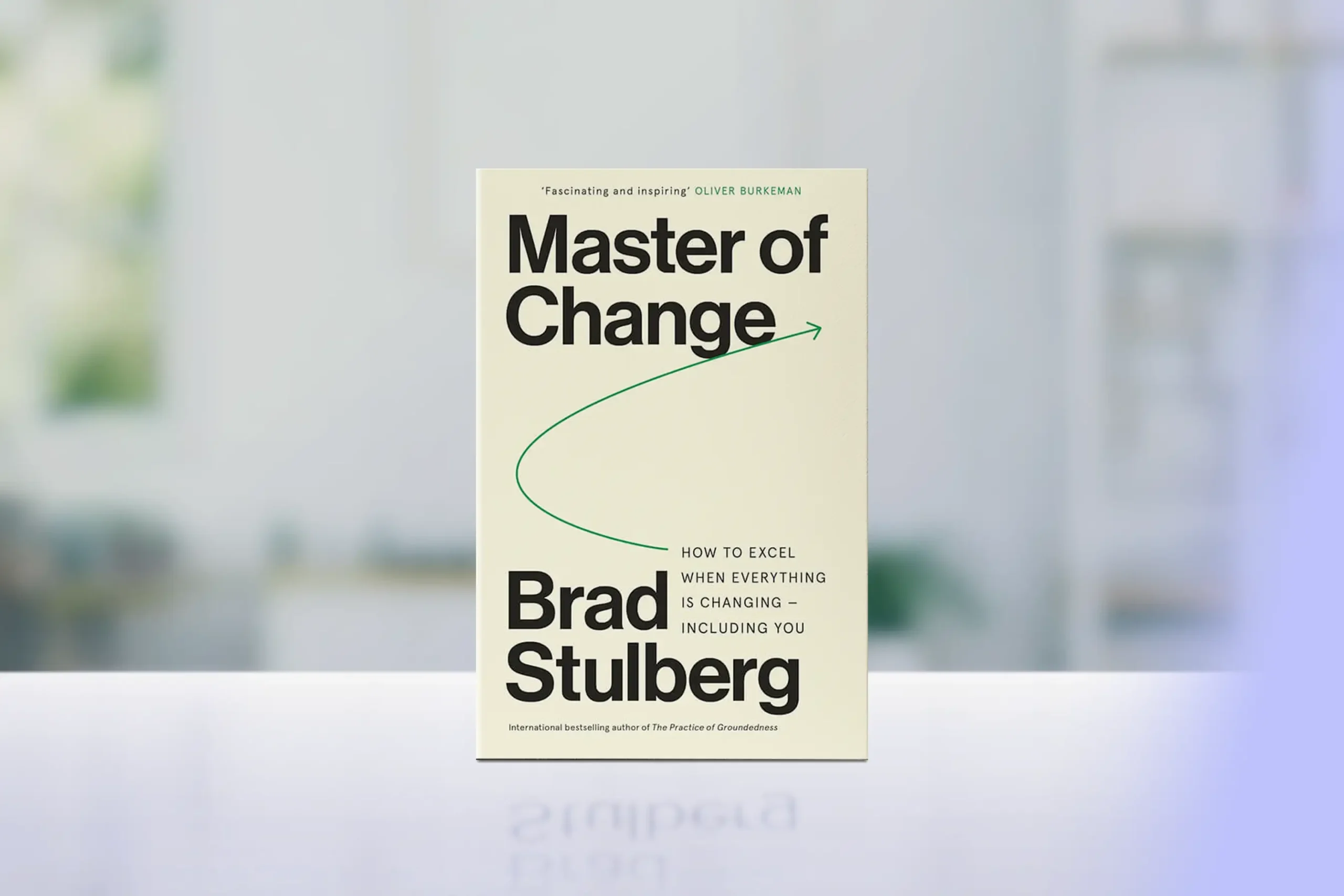Most goals fail within weeks. Here’s the truth: setting goals isn’t the problem—sticking to them is. Discover how to set goals that stick using practical, science-backed strategies, accountability systems, and daily habits that drive real results.
Inside this article:

1. Why Most Goals Fail
Have you ever enthusiastically set an ambitious goal, created a detailed plan, or committed to a personal transformation—only to find yourself weeks or months later with that goal abandoned or forgotten? Don’t worry, you’re not alone in this frustrating cycle. Research shows that about 90% of people fail to achieve the goals they set. But here’s the good news: individuals who set goals with specific strategies for achieving them are more than 10 times more likely to succeed.
The difference between those who achieve their goals and those who don’t isn’t about willpower, talent, or luck—it’s about the process.
Whether you’re aiming to advance your career, improve your health, build stronger relationships, or discover your purpose, I’m going to share research-backed strategies to transform how you set and pursue goals. By the end, you’ll understand not just how to create meaningful objectives, but how to design the systems and mindsets that turn lofty ambitions into lived realities.

2. The Science of Goal Setting
Did you know that your brain responds to goals in fascinating ways? When you set a clear objective, your reticular activating system (RAS) begins filtering information differently, highlighting opportunities relevant to your goals while filtering out distractions. This explains why when you decide to buy a certain car model, you suddenly start noticing it everywhere.
- Neural activation: Research shows that people who wrote down their goals, shared them with a friend, and sent weekly updates were 33% more successful in accomplishing them than those who merely formulated goals.
- Visualization impact: When you vividly imagine achieving your goal, your brain creates neural patterns similar to those created during actual performance, essentially programming your mind for success.
- Persistence effect: Studies show that participants who visualized their goals while using positive affirmations showed increased persistence when facing obstacles.
Try this: Spend five minutes each morning visualizing yourself successfully completing your goal to strengthen neural pathways that support achievement.

3. Goal-Setting Frameworks
For years, SMART goals (Specific, Measurable, Achievable, Relevant, Time-bound) have been the gold standard for goal setting. However, recent research suggests this framework may have limitations in today’s fast-paced world.
The MIT Sloan Management Review report “With Goals, FAST Beats SMART” proposes an alternative framework focusing on:
- Frequent discussions
- Ambitious scope
- Specific metrics
- Transparency
Similarly, the OKR (Objectives and Key Results) framework used by Google focuses on ambitious objectives coupled with concrete, measurable key results. Google encourages teams to achieve only about 70% of their OKRs, ensuring goals remain ambitious.
Which framework resonates most with you? The beauty is that you can adapt elements from different approaches to create a system that works for your unique situation.
Further reading: Our article on The Art of Effective Goal Setting for Personal Growth provides step-by-step guidance for implementing these frameworks.
Expert advice: Try setting fewer goals with greater focus rather than diluting your energy across too many objectives.

4. Purpose-Driven Goals
Goals without purpose are like ships without destination—they may move, but they’re not truly going anywhere meaningful. The most powerful goals are those aligned with your deeper sense of purpose and core values.
- Connect with your why: In his transformative book “Start with Why,” Simon Sinek emphasizes that understanding the purpose behind your actions creates sustainable motivation far beyond the temporary boost of willpower. When your goals connect to your deeper “why,” you tap into an intrinsic motivation that perseveres through challenges.
- Shift your focus: Try asking yourself: “If I achieve this goal, what will it allow me to become or contribute?” This question shifts focus from external outcomes to internal purpose, creating a more meaningful foundation for your efforts.
- Align with values: Research shows that people pursuing goals aligned with their core values reported greater well-being and higher rates of goal attainment.
- Avoid self-concordance: While striving for growth is important, goals misaligned with your authentic self can lead to what psychologists call “self-concordance”—the disconnect between what you think you should want and what truly resonates with your values.
Create a personal vision statement as the north star for your goal-setting efforts. To do this, reflect on your core values, imagine your ideal future, consider your desired impact, and craft a concise statement that captures this vision.
Learn more: Our article on Finding Your “Why”: Exercises to Uncover Your Life Purpose provides practical exercises to help identify your core purpose. For a comprehensive guide to creating your own Personal Mission Statement, check out How to Create a Personal Mission Statement: The Complete Guide.
Worth considering: When deciding on a goal, ask yourself, “If I achieved this, would I still feel it was worth the effort five years from now?”

5. Systems Over Goals
While clear goals provide direction, it’s the systems you build that ultimately determine success. As James Clear, author of “Atomic Habits explains, “You do not rise to the level of your goals. You fall to the level of your systems.”
A system is the set of regular habits, routines, and processes that move you incrementally toward your goals. Unlike goals which represent endpoints, systems focus on the daily behaviors that make achievement possible.
For example:
- Goal: Write a book
- System: Write 500 words every morning before checking email
Forming a new habit takes about 66 days, highlighting the need for sustainable systems. The power of systems lies in their compound effect—small, consistent actions accumulate into remarkable results over time. Think of them as daily investments with exponential returns.
To create effective systems, identify your goal’s smallest component actions and break them down into simple, repeatable behaviors you can perform consistently.
Smart strategy: Design your environment to make your desired habits easy and competing distractions difficult.

6. How to Plan
The planning fallacy, a term coined by Nobel Prize-winning psychologist Daniel Kahneman, describes our tendency to underestimate the time and resources required to complete tasks. Research shows people typically underestimate project timelines by 25-50%, leading to frustration and abandoned goals.
To combat this tendency:
- Use implementation intentions: Create specific “if-then” plans for your actions
- Apply the 1.5x rule: Whatever time you think a task will take, multiply it by 1.5
- Break goals down into smaller milestones: This makes progress more visible
- Conduct pre-mortems: Imagine your goal has failed and work backward to identify potential obstacles
Creating specific implementation intentions can significantly increase your likelihood of following through with your plans. Finding an accountability partner creates external motivation and increases your commitment level.
Going further: For practical strategies on creating systems for regular habits to achieve goals, see our article on The Power of Habit: How to Build and Break Habits for Growth. The book “The Power of Habit” by Charles Duhigg provides valuable insights into how habits form and how to reshape them.
Time-saving tip: Schedule specific times for working on your goal in your calendar and treat these appointments as non-negotiable commitments.

7. Embracing Setbacks
Perhaps the most critical skill in goal achievement is learning to view setbacks not as failures but as valuable feedback. Research from Stanford psychologist Carol Dweck shows that people with a “growth mindset” show greater resilience and achievement than those with a “fixed mindset.”
This approach can be applied to personal goals:
- Analyze what happened without judgment
- Identify specific factors that contributed to the setback
- Determine what adjustments could lead to better outcomes
- Implement these changes and continue forward
Remember that motivation naturally fluctuates—this is a neurological reality, not a personal failing. Research shows that intrinsic motivation (driven by internal rewards) is far more sustainable than extrinsic motivation (driven by external rewards).
When your motivation inevitably wanes (and it will):
- Revisit your “why” and reconnect with your deeper purpose
- Break tasks into smaller, more manageable steps
- Use the “two-minute rule”—if something takes less than two minutes, do it immediately
- Create environmental cues that trigger your desired behaviors
- Practice self-compassion rather than self-criticism
Success habit: Keep a “failure resume” where you document setbacks, what you learned, and how you adapted—this transforms disappointments into valuable data.

8. Knowing When to Pivot
While persistence is important, so is strategic adaptation. Government research on goal setting found that participants who regularly reassessed and adjusted their goals showed better outcomes than those who rigidly adhered to initial plans.
The key is distinguishing between beneficial adjustments and counterproductive abandonment. Ask yourself:
- Has the underlying purpose of this goal changed?
- Are there alternative paths to achieve the same outcome?
- Does new information suggest a different approach would be more effective?
- Am I considering changes due to genuine obstacles or temporary discomfort?
Simple start: To develop this resilient mindset, our article on The Role of Failure in Personal Growth: Learning from Setbacks offers practical exercises for reframing challenges and extracting valuable lessons from every experience.
Practical approach: Set a specific review date for your goal every 30 days to evaluate progress and make necessary adjustments to your approach.

9. Maintaining Motivation
Motivation is like a muscle—it needs regular exercise and occasional rest. Even the most dedicated goal-setters experience periods when their drive diminishes.
When motivation feels elusive, remember that it’s often action that precedes motivation, not the other way around. Sometimes, you need to start moving before you feel motivated to continue.
Here are some evidence-based strategies to rekindle your motivation:
- Celebrate small wins: Your brain releases dopamine when you achieve something, no matter how small. Track and celebrate your progress to create a positive feedback loop.
- Connect with your community: Surround yourself with people who inspire and support your journey. Their energy and encouragement can lift you during challenging times.
- Refresh your environment: Sometimes a change of scenery can provide a fresh perspective. Try working in a different location or reorganizing your workspace.
- Revisit your successes: Keep a record of past achievements and review them when you’re feeling stuck. This reminds you of your capability to overcome obstacles.
- Mix up your routine: Introducing variety can prevent boredom and reinvigorate your interest in the goal.
Research shows that self-compassion is more effective than self-criticism in maintaining long-term motivation. When you experience setbacks, treat yourself with the kindness you would offer a good friend.
Motivation hack: Link your goal pursuit to something you already enjoy to create positive associations that will pull you forward when willpower falters.

10. The Transformation Process
The journey of setting and achieving meaningful goals transforms you in ways that extend far beyond the specific objectives you accomplish.
- Personal evolution: Goals shape who you become, not just what you achieve.
- Character building: You develop discipline, resilience, and self-awareness through the process.
- Embracing setbacks: Progress isn’t linear—persistence matters more than perfection.
- Daily habits: As Aristotle noted, “We are what we repeatedly do.” Your actions reflect your deepest values.
- Start now: Commit to one small action in the next 24 hours toward your most important goal.
For advanced goal-setting strategies, check out Achieve Anything: The Art of Effective Goal Setting for Personal Growth.
Time to Achieve Your Goals
- Choose one meaningful goal you want to pursue.
- Identify one practical strategy from this guide to apply today.
- Commit to one small action you can complete within the next 24 hours.
You’re capable of more than you think. Every small step counts. Your future self will be grateful you started today.
Next Steps
Setting and achieving meaningful goals isn’t just about checking items off a list—it’s about becoming the person capable of accomplishing what once felt out of reach. The journey from intention to achievement requires more than wishful thinking; it requires clear systems, strategic planning, and the resilience to adapt when challenges arise. Your most important goals deserve your full focus and deliberate action.
Related Articles:
7 Goal Setting Habits: How to Turn Dreams into Reality
Develop daily habits that transform your ambitious goals into concrete, achievable outcomes.
The Art of Effective Goal Setting and Achievement
Master the principles and frameworks that separate goal-setters who succeed from those who struggle.
Mastering Personal Growth: Setting and Achieving Your Goals
Connect your goals to deeper personal values and create lasting momentum through aligned action.
Turning Inspiration Into Action: How to Achieve Your Goals
Bridge the gap between motivation and execution with practical strategies that drive results.
The Power of Momentum: How Small Wins Lead to Big Success
Harness the compounding effect of consistent progress to accelerate toward your biggest goals.
Further Reading
The One Thing by Gary Keller and Jay Papasan
Cut through distractions and focus on the single goal that makes everything else easier.
Atomic Habits by James Clear
Build the systems and small habits that compound into extraordinary goal achievement over time.
The 7 Habits of Highly Effective People by Stephen R. Covey
Develop a principle-centered framework for setting and achieving goals aligned with your values.
Grit by Angela Duckworth
Discover how sustained effort and resilience are the true drivers of long-term goal success.
Your Best Year Ever by Michael Hyatt
Use a proven planning process to set compelling goals and achieve breakthrough results.





